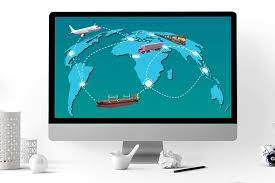Blockchain Technology: Understanding its Basics and Potential Uses
Introduction
Blockchain is a decentralized, distributed ledger technology that was originally developed as the underlying technology for the first cryptocurrency, Bitcoin. Since then, it has evolved into a powerful tool with a wide range of potential uses across various industries and applications. In this post, we will explain the basics of blockchain technology and discuss its potential uses.

What is Blockchain Technology?
A blockchain is a continuously growing list of records, called blocks, that are linked and secured using cryptography. Each block contains a cryptographic hash of the previous block, a timestamp, and transaction data. The decentralized nature of blockchain means that it operates on a network of computers, rather than being controlled by a single entity. This makes it more secure and transparent, as it eliminates the need for intermediaries and reduces the risk of a single point of failure.

How Does Blockchain Technology Work?
Blockchain operates on a peer-to-peer network of computers, where each node in the network has a copy of the entire blockchain. When a transaction is initiated, it is broadcast to the network and verified by multiple nodes. Once a transaction is verified, it is added to a block, which is then added to the blockchain. The cryptographic hash of the previous block and the timestamp ensure that once a block is added to the blockchain, it cannot be altered or deleted.
Potential Uses of Blockchain Technology
Blockchain technology has a wide range of potential uses across various industries, including finance, healthcare, supply chain management, and voting systems. Some of the potential uses of blockchain technology include:
Financial Applications
Blockchain technology has the potential to revolutionize the financial industry by improving efficiency, security, and transparency. For example, it can be used to create decentralized digital currencies, such as Bitcoin, that operate on a peer-to-peer network and eliminate the need for intermediaries. It can also be used to create decentralized exchanges, where users can trade cryptocurrencies without the need for a central authority. Blockchain technology can also be used to create secure and transparent payment systems, as well as to reduce the risk of fraud and counterfeiting in the financial industry.

Healthcare Applications
Blockchain technology has the potential to improve the healthcare industry by improving data security, privacy, and efficiency. For example, it can be used to create secure and decentralized medical record systems, where patients have control over their own medical records and can grant access to healthcare providers as needed. This can improve the accuracy and efficiency of medical treatment, as well as reduce the risk of data breaches and unauthorized access to sensitive information.

Supply Chain Management
Blockchain technology can be used to improve supply chain management by creating a secure and transparent system for tracking goods and materials. For example, it can be used to track the origin and movement of goods, from the source to the final destination, reducing the risk of counterfeiting and fraud. It can also be used to improve the efficiency of supply chain management by reducing the time and cost associated with manual processes and intermediaries.

Voting Systems
Blockchain technology can be used to create secure and transparent voting systems, where votes are recorded and tallied on a decentralized ledger. This can improve the accuracy and transparency of voting processes and reduce the risk of fraud and manipulation. With blockchain technology, each vote can be recorded on a secure, immutable ledger, and the results can be verified and audited by multiple parties, making it easier to ensure the integrity of the voting process.

Conclusion
In conclusion, blockchain technology has the potential to revolutionize various industries and applications by improving efficiency, security, and transparency. Although it is still in its early stages, blockchain has already shown promise in fields such as finance, healthcare, supply chain management, and voting systems. As the technology continues to evolve and mature, it is likely that we will see more widespread adoption and use of blockchain in the future.
In summary, blockchain technology is a decentralized, distributed ledger technology that has the potential to revolutionize various industries by improving efficiency, security, and transparency. Its potential uses range from financial applications to healthcare and supply chain management, to voting systems and beyond.